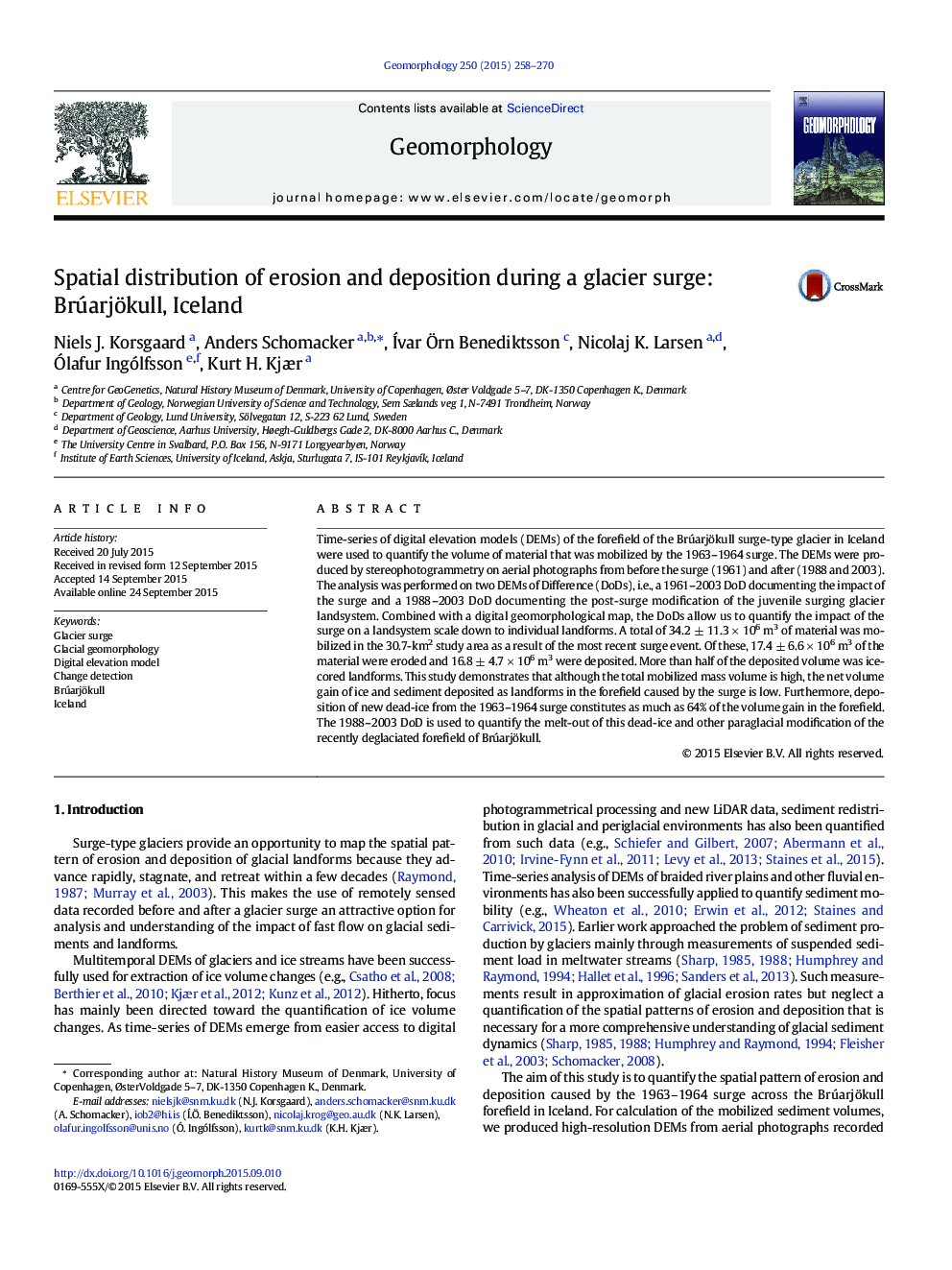| کد مقاله | کد نشریه | سال انتشار | مقاله انگلیسی | نسخه تمام متن |
|---|---|---|---|---|
| 6431804 | 1635399 | 2015 | 13 صفحه PDF | دانلود رایگان |

- Digital elevation models are used to quantify erosion/deposition by a glacier surge.
- Mobilized volume of material by the surge in the study area was 34.2 ± 11.3 Ã 106 m3.
- The volume of material reported here affected an area of 30.7Â km2 in the forefield.
- Elevation changes up to 34Â m were related to deposition and melting of dead-ice.
- Channelized fluvial erosion also contributed to the elevation and volume changes.
Time-series of digital elevation models (DEMs) of the forefield of the Brúarjökull surge-type glacier in Iceland were used to quantify the volume of material that was mobilized by the 1963-1964 surge. The DEMs were produced by stereophotogrammetry on aerial photographs from before the surge (1961) and after (1988 and 2003). The analysis was performed on two DEMs of Difference (DoDs), i.e., a 1961-2003 DoD documenting the impact of the surge and a 1988-2003 DoD documenting the post-surge modification of the juvenile surging glacier landsystem. Combined with a digital geomorphological map, the DoDs allow us to quantify the impact of the surge on a landsystem scale down to individual landforms. A total of 34.2 ± 11.3 Ã 106 m3 of material was mobilized in the 30.7-km2 study area as a result of the most recent surge event. Of these, 17.4 ± 6.6 Ã 106 m3 of the material were eroded and 16.8 ± 4.7 Ã 106 m3 were deposited. More than half of the deposited volume was ice-cored landforms. This study demonstrates that although the total mobilized mass volume is high, the net volume gain of ice and sediment deposited as landforms in the forefield caused by the surge is low. Furthermore, deposition of new dead-ice from the 1963-1964 surge constitutes as much as 64% of the volume gain in the forefield. The 1988-2003 DoD is used to quantify the melt-out of this dead-ice and other paraglacial modification of the recently deglaciated forefield of Brúarjökull.
Journal: Geomorphology - Volume 250, 1 December 2015, Pages 258-270